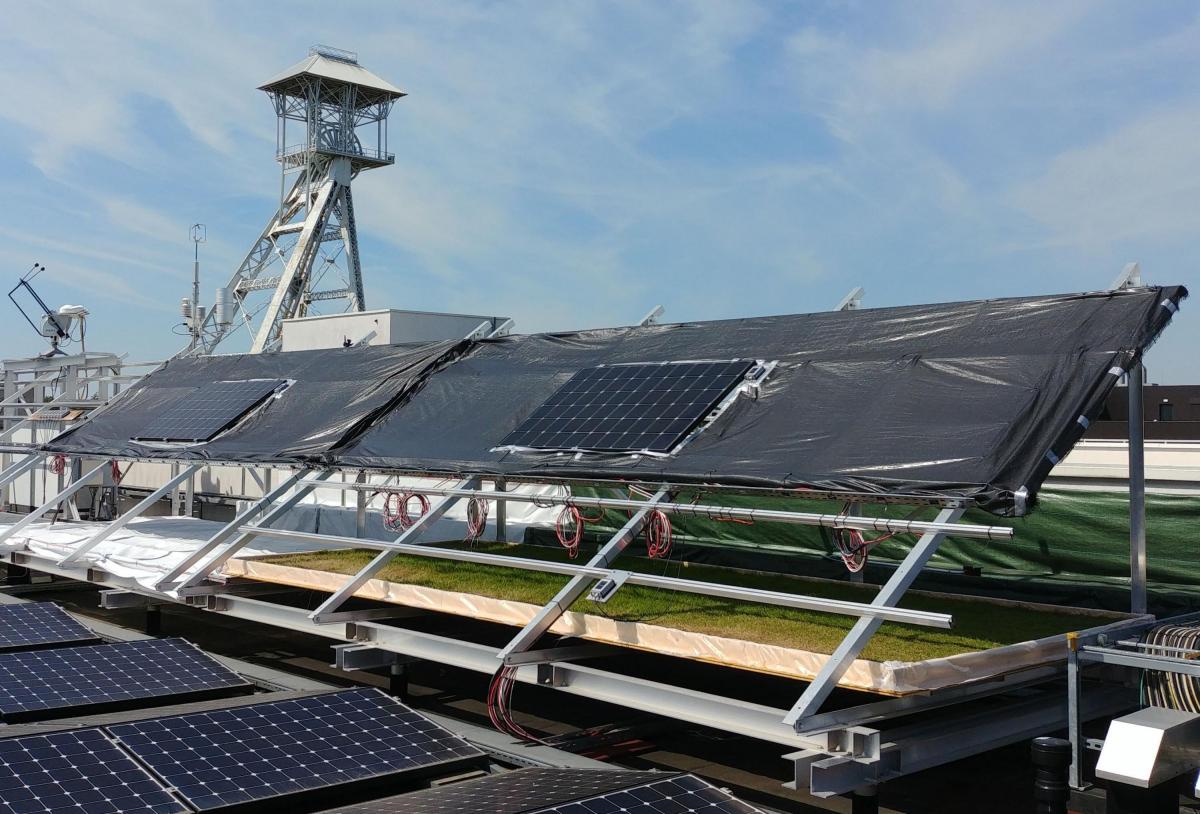Increased energy generation from bifacial solar systems through reflective textile
EnergyVille has successfully tested agro-textile as a reflector to enhance the energy generation of solar systems
A large share of solar photovoltaic (PV) systems worldwide is installed in ground-mounted settings, mostly in large utility-scale power plants. For these systems, photovoltaic modules that can absorb light from both sides have gained popularity in recent years, due to advancements in technology that facilitate their fabrication. With such “bifacial” modules, light reflected from the underground and surroundings onto the rear side can be utilized and converted to electrical energy. The performance of bifacial systems depends thus strongly on the reflectivity of the underground, usually referred to as albedo. Typically, increases in performance between 5% and 15% can be expected when systems are placed above grass or sand. Any improvement here translates directly into an increase in energy yield.
In order to find out whether their material can make a difference in such a system, Beaulieu Technical Textiles, a Belgian manufacturer and specialist in woven technical textiles , teamed up with researchers from EnergyVille/KU Leuven. They jointly developed a setup for the installation on the roof of the EnergyVille 1 building, where a test structure and metrology equipment are available for various demonstration projects. Magnifield, the white reflective textile was part of the setup, due to its performance in reflectance. A similar material in the portfolio of Beaulieu, Lumilys, is usually applied in apple orchards where it supports fruit coloring. This very reflective white polymer textile is permeable and reduces the growth of weeds and grass. It can be tied to the ground with simple fixtures. and is usable for several years, after which it can be recycled.
To make matters more interesting, grass was chosen as a reference material that would be used in a typical setting. For this, a wooden box had to be installed in one segment of the PV rack, in which rolled grass was planted. Next to it, the bottom of another segment was covered with the Magnifield textile, and a third one with no changes to the roof surface was chosen as a reference. In each segment, one of three identical commercial PV modules was placed, each of which was connected to electronics that automatically record performance with high accuracy. In a first phase the modules were operated in the open to see the full potential. In a second phase they were surrounded by black fabric in order to simulate realistic mounting conditions in a larger system. We obtained gains in energy yield relative to grass of 16% and 10% in the open and under realistic conditions, respectively.

“I am thankful for the opportunity to showcase the test and demonstration capabilities at EnergyVille with this successful experiment”, said Professor Johan Driesen of EnergyVille/KU Leuven. “Beaulieu as a specialist in the field of woven technical textiles provided our R&D team with a nice challenge that we managed to solve in close cooperation..”
The big boost obtained over conventional undergrounds is very encouraging and can make the use of this textile in future power plants worth the investment. In fact, the gain in yield is so big that a re-design of plants would be on order. With careful optimization, module racks can be placed more sparsely to allow for more gain from the reflectance and to save on installation costs.
“This small-scale experiment clearly shows a positive effect of Magnifield reflective fabric on energy generation. We are now implementing pilot scale experiments, to further work on installation methods and to assess the long-term performance of Magnifield. Based on the sustainable aspect of the project and the promising scale of the business, we want to invest time and people in a thorough research on the added value of our reflective fabric in the utility PV segment..”, says Roy Kerckhove, Sales Director, Beaulieu Technical Textiles.
